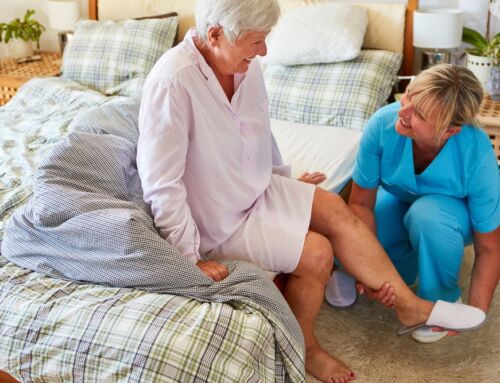There was a heartbreaking story in the Washington Post this week about an elderly man in China named Han Zicheng, who tried putting himself up for adoption. His wife had died years ago, and his adult sons had moved away and rarely called or visited. This 85-year-old man thought he would try to find a family to take him under their wing and care for him as he reached the end of his life, so he wrote the following on a flier and affixed it to a neighborhood bus shelter:
“Lonely old man in his 80s. Strong-bodied. Can shop, cook and take care of himself. No chronic illness. I retired from a scientific research institute in Tianjin, with a monthly pension of 6,000 RMB [$950] a month. I won’t go to a nursing home. My hope is that a kindhearted person or family will adopt me, nourish me through old age and bury my body when I’m dead.”
Aging alone
It’s gut-wrenching to read, but Han’s story is increasingly common in China, as well as in the United States and many other industrialized counties: seniors who are living alone and lack a familial or societal support system.
It was a much different story a century ago. Then, most families around the world lived together—young and old from multiple generations—and tended to the home and their family farm. The old took care of the very young, and the younger, healthier adults cared for the older or unhealthy ones. On top of this, in the United States, the average lifespan for a man in 1900 was 46.3, and for a woman, it was 48.3!
Since the Industrial Revolution and our shift away from an agrarian society, modernized countries no longer center around farming, and it is less and less common for multiple generations of a family to cohabitate. Instead, when children reach adulthood, they typically will move out of the family home, and often, will move away from the town where they grew up as they seek new educational and career opportunities.
Additionally, thanks to factors like better diets, safer childbirths, less grueling jobs, and modern medicine, the average American is living well into their late 70s. In fact, someone who is 65 today can expect to live another 20 years, according to census data.
And herein lie the issues.
A widening gap
As families become more geographically disjointed, it is frequently the older members of the family who pay the highest price. Older adults now face a care “gap” as a result of not only this change in family dynamics but also because people are living longer lives (though often with more chronic health conditions).
This is the exact situation Han Zicheng found himself in. He had outlived his wife, his sons lived far away, and he was left alone, with no family member to care for him in his old age. He had a monthly pension, so he may have been able to afford to pay for the services or assistance he needed, but with his attempt to find an adoptive family, he was looking for a more personal solution to fill the gap in his care and indeed, in his life.
>> Related: Planning for the Future After a Spouse’s Death
Elder orphans
Dr. Maria Torroella Carney, chief of geriatrics and palliative medicine at North Shore-LIJ Health System in New York, has described people like Han as “elder orphans.” His story exemplifies several key questions:
- What will we do if we find ourselves alone as we age? Who will care for us?
- How will we stay socially engaged as we age in order to avoid isolation and loneliness?
- How will we as a society help to fill the “gap” that is confronting so many seniors in our modern world?
These issues impact us all in one way or another.
Maybe you are one of the roughly one-third of Baby Boomers who are single, most of whom never married or are divorced—only 10 percent are widowed (per a 2012 study published in The Gerontologist). Perhaps you are one of the 15 percent of 40- to 44-year-olds who never had children (according to census data), or maybe you are among the many Americans whose adult children no longer live nearby. Or it could be that you have an aging friend or loved one who is confronting a “gap” in their care as they grow older.
>> Related: Home Alone: Is It the Best Option for Aging Adults?
Options for care at home
There are solutions to address the issues faced by elder orphans who prefer to remain in their home but do not have a family member to fill the role of caregiver.
For those who need assistance with things like household chores or personal care, a home care provider (also called a personal care aide or a home care aide) may be a good option. If a person needs a higher level of care, home healthcare providers, also known as home health aides, are able to treat an illness or injury in the seniors’ own home, ideally, helping the senior get better so that they can return to a more independent lifestyle.
One of the challenges with at-home care options is finding consistent care. There is a 60 percent turnover rate in the caregiver industry due to low pay, difficult work conditions, and a lack of benefits.
These home care solutions can get expensive quickly, too. The average monthly cost for just 44 hours of in-home care was around $3,800 in 2016. There will likely be other necessary paid services such as bill paying and accounting, and other assistive equipment needs, which can easily add up to another $500 to $1,000 per month, depending on which services are required. Not to mention the day-to-day costs of maintaining a home.[1] And these solutions don’t address the detrimental effects of isolation and loneliness that so often comes with living alone.
>> Related: The Senior Loneliness Epidemic & Solutions to “Cure” It
A CCRC may be the answer
Because of the issues presented by living alone and not having family available to help care for a person as they age, an option some so-called elder orphans may want to consider is a continuing care retirement community (CCRC or life plan community). Although they can be expensive, a CCRC solves the care gap, addressing just about every challenge that can arise for a senior as they age.
Not only do CCRCs provide residents with a complete continuum of care services, from maintenance-free independent living to full-time skilled nursing care, they also offer a huge array of amenities and activities to ensure residents stay physically and mentally active and socially engaged, which has a positive effect of seniors’ health and wellbeing.
If you are considering a CCRC, it’s important to do your homework in order to choose the community that is right for you and also to fully understand what you are getting for your money. You can find information on CCRC contract types, entrance fees, refund options, and more under our Resources section.
An individual and societal issue
The story of Han Zicheng could be set in the United States or in many other modernized counties around the world. While there are options for these elder orphans who are confronted with a care gap—such as home health workers, assisted living facilities, and CCRCs—we as a society must also find more and better ways to look after and support older generations as they age. As thousands of Baby Boomers reach retirement age each day, it is a growing situation with not only financial implications for our nation, but also ethical ones, and it is a challenge that simply must be solved.






